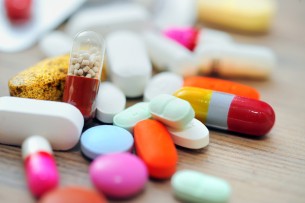Thanks to modern drugs, the discovery that you are infected by HIV does not carry the crushing burden it once did. But has this success made those at risk complacent and those responsible for planning the UK’s sexual health services careless? Experts warn that for all the advances that have been made, the battle is not yet won.
Around 6,000 new HIV infections are reported every year in the UK, a figure that has declined since a decade ago, largely the result of changed patterns of migration from Africa. Diagnoses among homosexual or bisexual men have increased over the same period. Fewer of those infected go on to develop Aids, but more than 600 people died with the disease in 2014, mostly those in whom the infection was spotted late. Some 104,000 people are estimated to be living with HIV in the UK in 2014.
Detection remains the weakest link. The targets accepted internationally are that 90 per cent of those with HIV infection should be diagnosed. Of these, 90 per cent or more should be on sustained therapy with modern drugs and of these, 90 per cent or more should have such a low level of the virus in their bodies that they cannot pass on the infection.
Around 6,000 new HIV infections are reported every year in the UK
“In the latter two 90s, we do extremely well,” says Yusef Azad, director of strategy at the National Aids Trust. “We already achieve those targets. Where we don’t do so well is the other leg of the stool – detection.”
Being diagnosed
Public Health England estimate that in 2013 around 24 per cent of those with HIV infection remained in ignorance of it. “We can’t overstate the importance of testing for HIV to ensure an early diagnosis” says Dr Valerie Delpech, head of the organisation’s national HIV surveillance. “People diagnosed with HIV late are ten times more likely to die in the first year of diagnosis compared to those diagnosed promptly.”

Chemsex or sex under the influence of drugs is increasing HIV transmission rates
Mr Azad would like to see more routine testing by the NHS. The National Institute for Health and Care Excellence (NICE) recommends that in 60 high-prevalence areas, routine HIV testing should be done on anybody admitted to hospital. “We did a survey last year and found that only a minority of areas were following this advice,” he says. “When you take blood, it’s really fairly straightforward to add an HIV test to the mix. Some parts of the NHS are doing it, but many are not. We need to overcome this reluctance.”
Despite the safe-sex message, risky behaviour continues and may be increasing. Mobile phone apps make finding a partner for sex much easier than it once was, so increases in transmission rates among men could be driven not by a decline in condom use, but an increase in the number of partners. Another worry is the rise of “chemsex” – sex under the influence of drugs.
“A lot of people in that scene are HIV positive, but a lot are not,” says Mr Azad. “There is quite a lot of unprotected sex and some injecting going on, so there are clearly risks.”
The combination of sex and drugs is a new challenge to treatment services that have yet to regain their balance after the changes made by the 2012 Health and Social Care Act. The British Association for Sexual, Health and HIV warned last year that “dysfunctional” commissioning practices were putting services at risk. The arrangements are complex, with local authorities responsible for commissioning services for sexual health, HIV prevention and testing, but NHS England responsible for commissioning HIV care.
The All-Party Parliamentary Group on Sexual and Reproductive Health concluded in a report this July that there is a lack of clarity over who is ultimately responsible, and what powers they have to drive up standards and outcomes.
Preventing Risks
A key test will be a decision expected next June from NHS England on pre-exposure prophylaxis (PrEP), following the stunning results of a trial carried out in England showing that uninfected men who take the HIV drug Truvada daily reduce their chance of infection by 86 per cent. Aids charities have greeted the results enthusiastically, urging the NHS to make PrEP available “urgently”.

A clinical trial of Truvada showed that the drug reduces the chance of infection by 86 per cent
But Truvada costs about £4,500 a year for each user, far more than condoms. Why should the NHS pay to make sex lives safer when a cheap and widely available preventative measure already exists? Because condoms aren’t always the right answer, says Mr Azad, and prevention is much cheaper than treatment. “Would it save us money to use PrEP rather than having to treat HIV? We can’t insist that only one form of protection is available,” he says.
Today is World Aids Day, an annual event first celebrated in 1988 and one that used to see intensive awareness-raising activities in many countries. The arrival of effective therapies reduced the urgency as it reduced the death toll, so that today’s event may pass some people by. But worldwide 1.5 million people still die of Aids every year. The target for World Aids Day is zero infections, zero deaths and zero discrimination. There is still a long way to go.
Being diagnosed

Preventing Risks

